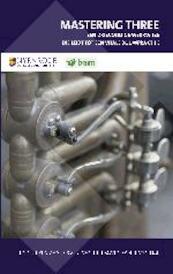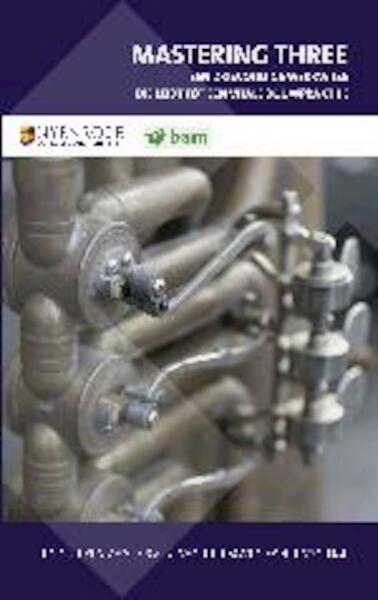| Prijs | € 18,50 |
Uitverkocht
Paperback | Juni 2013 |
Beoordeel dit boek als eerste!Beschrijving
Specificaties
- Auteur
- Henk Diepenmaat, Joost van Ettekoven, Anke van Hal
- Uitgever
- Gorcum b.v., Koninklijke Van
- ISBN
- 9789089800541
- Bindwijze
- Paperback
- Publicatiedatum
- Juni 2013
- Categorie
- Wetenschappelijk
- Taal
- Nederlandstalig
Beschrijving
De huidige bouwsector kenmerkt zich door intensieve samenwerking en een toenemend streven naar innovatie en duurzaamheid. Velen zijn het met ons eens dat een juiste mix van samenwerking en innovatie zal leiden tot een steeds duurzamere bouwpraktijk. Een bouwpraktijk die gepaard gaat met maximale waardecreatie voor alle betrokken partijen. Tegelijkertijd laat de weerbarstige praktijk zien dat niet elke vorm van samenwerking leidt tot het beoogde resultaat.
Wat zijn krachtige werkwijzen om in samenwerking duurzaam te innoveren?
Deze vraag stond centraal in een onderzoek, dat werd uitgevoerd door onderzoekers van het Center for Sustainability (CfS) van Nyenrode Business Universiteit. Om tot een antwoord te komen is onder meer teruggegrepen op theorieën over strategieën om waarde te genereren uit de vorige eeuw. Deze strategieën werden gecombineerd en uitgebreid met nieuwe duurzaamheidsinzichten, waarin waardecreatie in complexe spelersvelden centraal staat. In een gecombineerd proces van literatuurstudie en analyse van de praktijk construeerden de onderzoekers drie centrale werkwijzen. Werkwijzen die elk verschillend aankijken tegen de aard en mix van samenwerking, innovatie en duurzaamheid. Het resultaat: zoals er sterk van elkaar verschillende transportvormen ter beschikking staan om te reizen in verschillende landschappen, zijn er ook sterk van elkaar verschillende werkwijzen die verschillende vormen van waarde kunnen verzilveren. En net zoals de keuze van het transportmiddel afhangt van de omstandigheden - voor langere afstanden neem je de auto, je pakt de boot als je het water over moet, en gaat te voet bij een bergpaadje - geldt dat ook voor deze werkwijzen.
Om maximaal waarde te genereren in complexe spelersvelden is een combinatie van de drie werkwijzen nodig. Dan maak je meters in een gevarieerd landschap. Het resultaat is een duurzamere bouwpraktijk, luidt de mening van de onderzoekers. Organisaties die de toekomst instappen moeten volgens hen dus eigenlijk in staat zijn om - om bij de metafoor te blijven - het landschap te herkennen en alle drie de voertuigen te besturen. Mastering Three, dat is de kunst!
The current construction sector is characterised by intensive cooperation and the pursuit of innovation and sustainability. Many agree with us that the right mix of cooperation and innovation will lead to a more sustainable building practice with the attendant maximum value for all parties involved. At the same time this intractable practice demonstrates that not every kind of cooperation produces the desired result.
What are the robust methods to achieve sustainable innovation through collaboration?
This was the main question in a survey conducted by researchers from the Center for Sustainability (CfS) at Nyenrode Business Universiteit. In order to answer this question we fell back on theories from the last century about strategies to generate value. These strategies were combined and expanded with new insights into sustainability, in which generating value in complex fields plays a central role. Following a literature study and an analysis of current practice, the researchers formulated three main methods each of which has a different view on the nature and mix of collaboration, innovation and sustainability. The result: just as there are widely differing kinds of transport for travelling in different terrains, there are also widely differing methods able to capitalise various forms of value. And just as the mode of transport depends on the circumstances - the car for longer distances, a boat for water, on foot along a mountain path - a similar choice also applies to these methods.
Generating maximum value in complex players fields requires a combination of the three methods, and only then will progress be made in a varied landscape. The researchers believe that the result will then be a sustainable building practice. Organisations moving into the future must, they claim - and let us stick to the metaphor here - be able to identify the landscape and use all three modes of transport. Mastering Three, that is the essence!
Associate Prof. H.B. (Henk) Diepenmaat MSc PhD has, since 2011, been working part-time at the Center for Sustainability at Nyenrode Business Universiteit. Since 1998 he has been a director of Actors Process Management BV, a practice that promotes processes with many parties and interests. Henk Diepenmaat has worked in a wide range of sectors, including: construction, agro-food, mobility, energy, healthcare, education, ICT, and the environment. He publishes in many different ways in his fields of expertise. One example: he published the handbook 'Multi-actor process management in theory and practice' in 2011. Henk Diepenmaat is also a co-director of The Greenware Hoods MV, a social company that promotes sustainability in an enterprising manner.
J.G. (Joost) van Ettekoven MSc has worked since 2008 as a researcher at the Center for Sustainability at Nyenrode Business Universiteit. Recurring themes in his research projects include construction, sustainability, innovation, collaboration and design thinking. In addition to his research Joost is also involved in iistudio, a collective of young independent designers working in the field of sustainable innovation in the built environment.
Prof. J.D.M. (Anke) van Hal MSc PhD has been professor of Sustainable Building & Development at the Center for Sustainability (CfS) at Nyenrode Business Universiteit since 2009. The CfS focuses on creating business opportunities from sustainability. In addition, Anke van Hal has, since 2007, been practice professor of Sustainable Housing Transformation at the Faculty of Architecture at TU Delft, prior to which she worked for over 20 years as a sustainable building specialist. Her work is characterised by the term 'the merger of interests', the starting point for which is an analysis of the interests of the parties involved in a project. The second step is to promote these interests in a sustainable manner. And the third step is to find attractive financial packages. Anke van Hal has numerous publications and articles to her name. She is also a member of various juries and advisory boards, and is on the board of The Dutch Green Building Council.
Schrijf een recensie
Specificaties
- Auteur
- Henk Diepenmaat, Joost van Ettekoven, Anke van Hal
- Uitgever
- Gorcum b.v., Koninklijke Van
- ISBN
- 9789089800541
- Bindwijze
- Paperback
- Publicatiedatum
- Juni 2013
- Categorie
- Wetenschappelijk
- Taal
- Nederlandstalig











